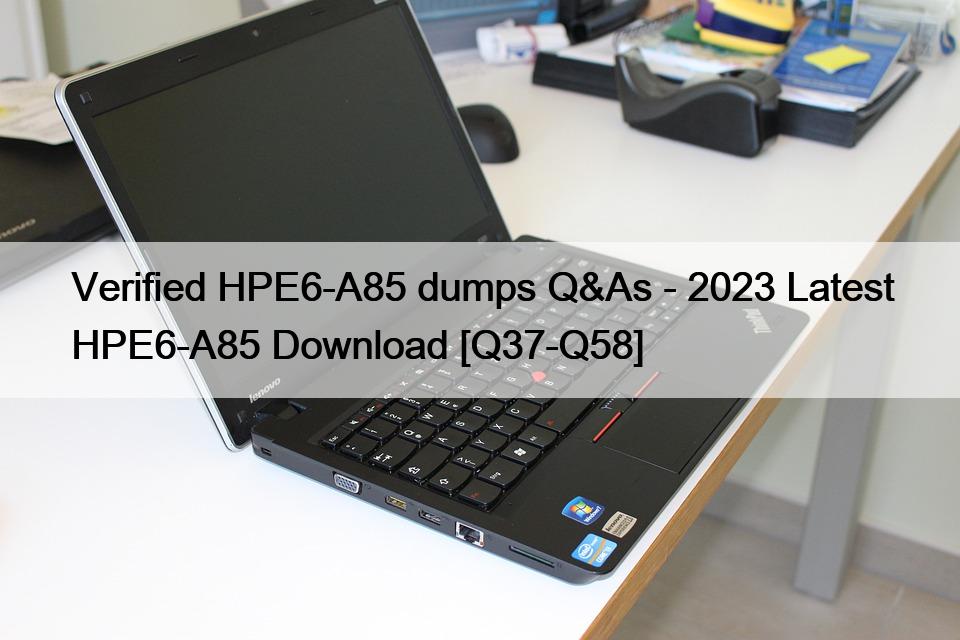NO.45 Review the configuration below.
Explanation
NO.53 What is the ideal Aruba access switch for a cost-effective connection to 200-380 clients, printers and APs per distribution rack?
Explanation
NO.57 Match the appropriate QoS concept with its definition.
Explanation
QoS Quality of Service (QoS) is a set of techniques that manage network resources and provide different levels of service to different types of traffic based on their requirements. QoS can improve network performance, reduce latency, increase throughput, and prevent congestion. concept and its definition. Here is my answer:
QoS Concept:
Best Effort Service
Class of Service
Differentiated Services
WMM ====================== Definition:
d) A method where traffic is treated equally in a first-come, first-served manner a) A method for classifying network traffic at Layer 2 by marking 802.1Q VLAN Ethernet frames with one of eight service classes b) A method for classifying network traffic at Layer 3 by marking packets with one of 64 different service classes c) A method for classifying network traffic using access categories based on the IEEE 802.11e QoS standard Short But Comprehensive Explanation of Correct Answer Only: The correct match between QoS concept and its definition is as follows:
Best Effort Service: This is a method where traffic is treated equally in a first-come, first-served manner without any prioritization or differentiation. This is the default service level for most networks and applications that do not have specific QoS requirements or guarantees. Best Effort Service does not provide any assurance of bandwidth, delay, jitter, or packet loss.
Class of Service: This is a method for classifying network traffic at Layer 2 by marking 802.1Q VLAN Ethernet frames with one of eight service classes (0 to 7). These service classes are also known as IEEE
802.1p priority values or PCP Priority Code Point (PCP) is a 3-bit field in the 802.1Q VLAN tag that indicates the priority level of an Ethernet frame . Class of Service allows network devices to identify and handle different types of traffic based on their priority levels. Class of Service is typically used in LAN Local Area Network (LAN) is a network that connects devices within a limited geographic area, such as a home, office, or building environments where Layer 2 switching is predominant.
Differentiated Services: This is a method for classifying network traffic at Layer 3 by marking packets with one of 64 different service classes (0 to 63). These service classes are also known as DiffServ Code Points (DSCP) DiffServ Code Point (DSCP) is a 6-bit field in the IP header that indicates the service class of a packet . Differentiated Services allows network devices to identify and handle different types of traffic based on their service classes. Differentiated Services is typically used in WAN Wide Area Network (WAN) is a network that connects devices across a large geographic area, such as a country or continent environments where Layer 3 routing is predominant.
WMM: This is a method for classifying network traffic using access categories based on the IEEE
802.11e QoS standard. WMM stands for Wi-Fi Multimedia and it is a certification program developed by the Wi-Fi Alliance to enhance QoS for wireless networks. WMM defines four access categories (AC): Voice, Video, Best Effort, and Background. These access categories correspond to different priority levels and contention parameters for wireless traffic. WMM allows wireless devices to identify and handle different types of traffic based on their access categories.
References: https://en.wikipedia.org/wiki/Quality_of_service
https://www.cisco.com/c/en/us/td/docs/ios-xml/ios/qos_dfsrv/configuration/xe-16/qos-dfsrv-xe-16-book/qos-dfsr
https://www.cisco.com/c/en/us/support/docs/wireless-mobility/wireless-lan-wlan/81831-qos-wlan.html
https://www.wi-fi.org/discover-wi-fi/wi-fi-certified-wmm






